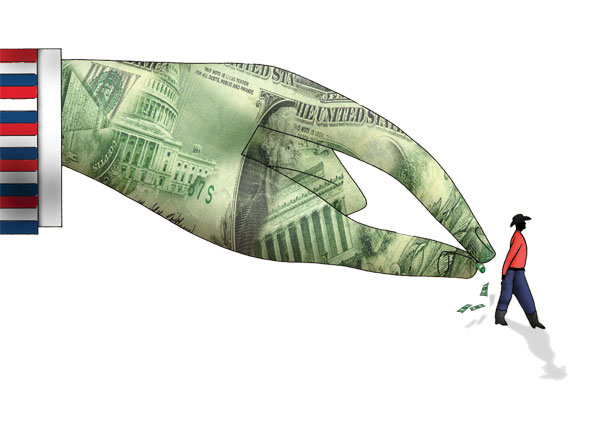Use These Late-Year Tips To Cut The Taxman’s Bite
Due to drought-forced management practices, planning ahead on your 2013 taxes can help minimize the bite from deferred income.
November 1, 2013

Halloween is past, but the fright continues for some folks facing end-of-year tax decisions. Delayed action on “drought sales” and consideration of revisions to IRS tax codes can conjure up a cold sweat for even the crustiest cowboy.
Stan Bevers, Texas A&M AgriLife Extension economist in Vernon, reminds producers that several features for 2013 income tax filings can have a greater financial impact than in the past.
Some involve the sale of livestock during the recent droughts, Bevers says. Hundreds of thousands of cows were sold in late 2010, 2011 and 2012 due to drought and its impact on pastures and water supplies. Calves that normally would have been grazed for later sale had to be sold early. A lot of that income was deferred.
“These provisions haven’t changed since this drought started in the fall of 2010,” Bevers says. “There are two situations. The first is Internal Revenue Code (IRC) 1033(e), where the rancher sells breeding stock (cows, bulls, etc). This is an ‘Involuntary Conversion of Assets.’
“The second situation is IRC 451(e), where the rancher sells calves in the current year, while normal business practice is for him to graze his calves until the following year and then sell them. The rancher doubles up his income. However, using this code, the rancher can defer his income from the sale of the calves until the next year just as if he had grazed his calves and then sold them the following year.”
The National Cattlemen’s Beef Association (NCBA) also provides this information on IRC 1033(e):
• If the producer’s county is eligible for federal disaster assistance at the time of sale, the replacement period begins on the date that the livestock were sold and ends at the conclusion of the first taxable year after the first drought-free year for that area.
• If the producer resides in an area that hasn’t been declared eligible for disaster assistance, the replacement period begins on the date of the sale and ends two years after the close of the tax year in which the involuntary conversion occurred.
Subscribe now to Cow-Calf Weekly to get the latest industry research and information in your inbox every Friday!
IRC 451(e) provides for the one-year postponement of gain on the sale of all classes of livestock. NCBA says that in order to qualify for this election a producer must meet the following criteria:
Their principal business must be farming; they must use the cash method of accounting; they can show that under usual business practices, they would not have sold or exchanged the additional animals this year except for the weather-related condition; and the weather-related condition caused an area to be designated as eligible for assistance by the federal government.
Bevers says there are also provisions dealing with a ranch or farm’s expense deductions, filed using IRS Section 179. “The maximum amount you can elect to deduct for most Section 179 property you placed in service in 2013 is $500,000,” he says. “This limit is reduced by the amount by which the cost of the property placed in service during the tax year exceeds $2 million.”
IRS has extended a special depreciation allowance for certain qualified property acquired after 2007. “You may be able to take a 50% special depreciation allowance for certain qualified property acquired after Dec. 31, 2007 and placed in service before Jan. 1, 2014,” Bevers says.
He adds that additional revised tax provisions involve Social Security and Medicare. “For tax years beginning in 2013, the Social Security part of the self-employment tax increases from 10.4% to 12.4%,” he says. “As a result, the self-employment tax is increased from 13.3% to 15.3%.
“The maximum net self-employment earnings subject to the Social Security part (12.4%) of the self-employment tax increases to $113,700 for 2013. There is no maximum limit on earnings subject to the Medicare part (2.9%).”
Other tax provisions for 2013 include setting the standard mileage rate for cost of operating your vehicle at 56.5¢/mile.
Bevers encourages producers to seek assistance from their accountant to determine how their operations are impacted by the tax codes. Find more on the NCBA tax information here.
Larry Stalcup is an Amarillo, TX-based freelance writer.
You might also like:
Wolves' Economic Bite On Cattle Goes Way Beyond Predation
8 Apps For Ranchers Recommended By Ranchers
BEEF Honors 50 Top Industry Leaders
70+ Photos Honor The Hardworking Cowboys On The Ranch
You May Also Like


.png?width=300&auto=webp&quality=80&disable=upscale)
